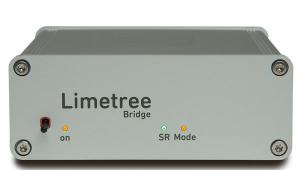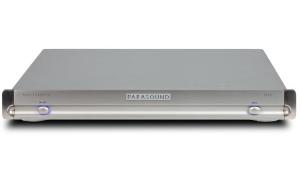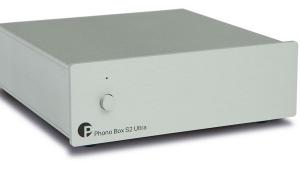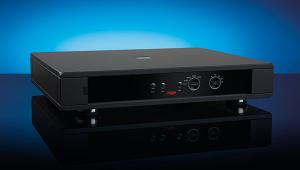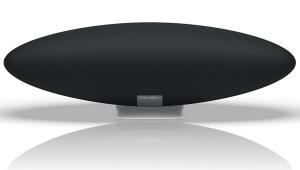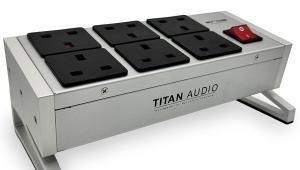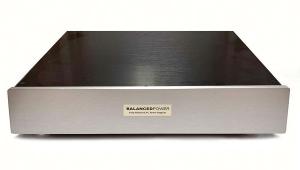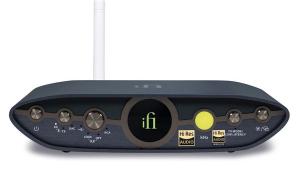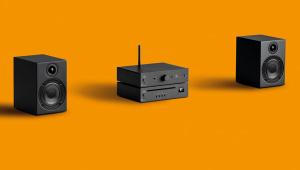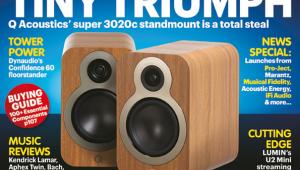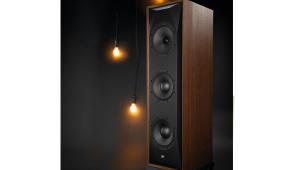Rogue Audio Triton II

 There is no shortage of brand’s introducing high-quality phono stage models at the moment, along with a number of companies tweaking existing designs to stay competitive. One such example that’s updating one of its existing designs is US-based Rogue Audio. We saw its original Triton MM/MC phono stage back in HFC 413 and this updated version aims to improve its already impressive performance even further.
There is no shortage of brand’s introducing high-quality phono stage models at the moment, along with a number of companies tweaking existing designs to stay competitive. One such example that’s updating one of its existing designs is US-based Rogue Audio. We saw its original Triton MM/MC phono stage back in HFC 413 and this updated version aims to improve its already impressive performance even further.
Externally the casework looks identical to the original, but Rogue claims that the internal circuit design is completely new and has been implemented with a view to offering both higher gain and a lower overall noise floor. On the first count it has been entirely successful. The Triton has four gain settings: the highest of which is 70dB, which should accommodate all but the most miniscule cartridge outputs. Also handy is the 55dB setting for moving-coil cartridges with output figures between 0.5 and 1mV.
Rogue Audio is perhaps best known for its valve and hybrid designs, but the Triton II is completely solid state. The circuit uses a three-stage gain process to help minimise the potential for noise to creep in and this is further helped by a regulated power supply that feeds each section separately. A rumble filter and stereo/mono mode is selected via two rear panel switches and are the only external controls on the phono stage except for the mains power switch.
As well as the aforementioned gain settings, the Triton II has a considerable range of adjustments for capacitance and impedance. These are all performed via a selection of dip switches hidden beneath the small removable hatch on top of the unit, which proves to be a reasonably practical approach – instead of being placed in often slightly inconvenient locations on the underside or on the rear panel, you simply unscrew one of the bolts and slide the panel to access the switches. Rogue Audio has thoughtfully arranged the blocks of dip switches in a logical and symmetrical fashion,which means that making adjustments is relatively unchallenging using the supplied settings sheet as a guide, and gives a high level of flexibility to support plenty of different moving-magnet and moving-coil cartridges.
The solid chassis of the Triton II is a no-nonsense design, but it lacks some of the flair of some of its similarly priced rivals. I’m not a big fan of the absence of a power button from the front panel (there’s only the rocker switch on the rear), and the stereo RCA input for the turntable seems oddly placed directly below the output to me, but these are minor quibbles. I do like the soft feet that are fitted, which should avoid marking any surface it’s placed on as well as isolating the unit from external vibrations.
Sound quality
The Rogue Audio has the unenviable task of dropping into the space in my hi-fi rack that was recently vacated by the peerless Rega Aura MC phono stage (HFC 446), and it is a testament to its fundamental sonic qualities that in doing so I don’t feel a sense of jarring disappointment. Although the Triton II doesn’t match the near supernatural levels of quiet that the Rega possesses, it is commendably noise free – suggesting that the other aim of the new circuit design has been met – and successfully lowers the overall noise floor.
Initially connected to the Hana ML moving-coil cartridge running on a Michell GryoDec and SME M2-9 combination, the Triton II has a tonal balance that works well with the very ‘down-the-line’ nature of the Hana. There is a fractional lift to the Rogue’s midrange and treble delivery that really works to the advantage of both parties. This lift is wonderfully judged because if the rest of the system the Triton II is in is also relatively neutral, the effect that results is wholly benign. The bleak but sumptuous production of In Dream by Editors gains a slightly humanising quality as a result.
This is achieved without in any way undermining the immense feeling of space ingrained into this record – intentionally giving the effect of the band almost yelling into the void. The Triton II delivers this space in a believable and extremely compelling way. Helping this along is an excellent bass response. The low end is deep and has a force that you feel as well as hear, but never to the point that it overwhelms what is happening further up the scale.
Moving to the sumptuously produced Dionysus by Dead Can Dance suggests that the Triton II is more of a big picture-style device than a forensic one. Little details that I know are on the record are harder to discern here, but you will be drawn to the scale and sheer presence that the Rogue Audio possesses. The incredible ululations in Dance Of The Bacchantes are reproduced with real punch and vividness, demonstrating the effortless dynamic range of the record and the Triton II. Neither is the preserve of audiophile pressings either. The grungy and congested Love Is Dead by Chvrches is prised open by the Triton II to ensure that Lauren Mayberry’s wonderful vocal turn is given the attention it fully deserves. It’s not blind to the faults of the record – there are a fair few of them after all – but it doesn’t render the results unlistenable.
Making the required adjustments to listen with moving-magnet cartridges and then attaching a Nagaoka MP200 (HFC 434) doesn’t significantly alter the presentation, but it does show some interesting quirks. Unusually for a phono stage at this price, the Triton II doesn’t seem to be any quieter at the lower gain setting and this makes it noisier than some rivals. It redresses the balance by just how dynamic it is and helps the Nagaoka MP-200 cartridge to give a performance that belies its relatively lowly price.
Where these dynamics come into their own is with smaller but lively recordings. Miles Davis’ Sorcerer gains a sheer immediacy that lifts the music from competent reproduction to genuine experience. Instruments gain a tangible presence in the room and are placed in an effortlessly three-dimensional soundstage. As with moving coil, there is a feeling when compared with some more forensic offerings that there is a slight absence of fine detail, but it is hard to feel short changed when the overall presentation proves to be quite so continuously enjoyable.
Conclusion
The consistent engagement that the Triton II brings to music is what really charms here. If you’re on the side of the hi-fi argument that a domestic system is all about enjoying music rather than dissecting it, this phono stage makes this a reality and so needs seeking out at the price. ES
DETAILS
Product: Rogue Audio Triton II
Price: £1,295
Origin: USA
Type: MM/MC phono stage
Weight: 8.2kg
Dimensions: (WxHxD) 432 x 89 x 229mm
FEATURES
● Adjustable gain and capacitance settings
● Rumble filter
● Mono/stereo switch
 |
Inside this month's issue:
Ruark R610 music system and Sabre-R standmount speakers, PMC twenty.23i Active, floorstanders, English Acoustics Downton preamplifier, Bluesound NODE ICON preamp/streamer, Ortofon Concorde Music Blue MM cartridge and much, much more
|









